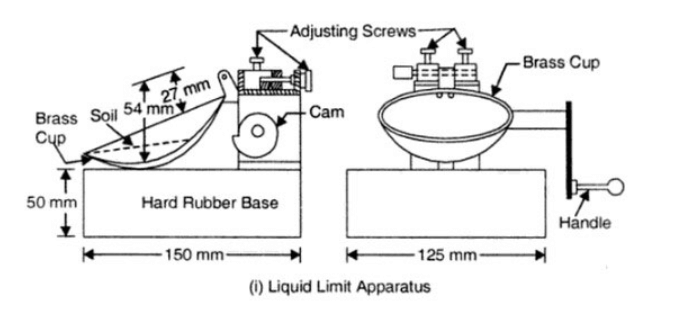In the dynamic landscape of construction, precision and reliability are non-negotiable aspects. Any compromise in material quality can lead to significant repercussions, ranging from safety hazards to financial losses. Amidst various testing methods, Atterberg Limits emerge as a cornerstone in assessing soil behavior and composition. This guide delves into the intricacies of Atterberg Limits testing and its pivotal role in enhancing quality control standards within construction endeavors.
Understanding Atterberg Limits:
Atterberg Limits refer to the moisture content boundaries that define the behavior of fine-grained soils, specifically clay and silt. Consisting of three main parameters—Liquid Limit (LL), Plastic Limit (PL), and Plasticity Index (PI)—Atterberg Limits provide insights into the plasticity and consistency of soils under different moisture conditions. These measurements serve as fundamental indicators for engineers and geotechnical professionals, guiding them in making informed decisions throughout the construction process.
Importance in Construction Quality Control:
The significance of Atterberg Limits testing in construction quality control cannot be overstated. By accurately determining the LL, PL, and PI of soil samples, engineers gain valuable information regarding their suitability for various construction applications. Whether it’s foundation design, pavement construction, or slope stability analysis, Atterberg Limits serve as a reliable predictor of soil behavior, allowing for proactive mitigation of potential risks and vulnerabilities.
Methodology of Atterberg Limits Testing:
Conducting Atterberg Limits testing involves a series of standardized procedures aimed at characterizing the plasticity and moisture sensitivity of soils. From sample collection to data interpretation, each step demands meticulous attention to detail to ensure accuracy and reproducibility. Common techniques include the Casagrande method for determining LL and the rolling method for PL determination. By adhering to established protocols, engineers can obtain consistent and reliable results for informed decision-making.
Practical Applications in Construction Projects:
In real-world construction scenarios, the insights derived from Atterberg Limits testing translate into tangible benefits across various project phases. During site investigation and characterization, Atterberg Limits help in classifying soils based on their engineering properties, facilitating optimal design and construction strategies. Furthermore, continuous monitoring of soil behavior through periodic testing enables early detection of potential issues, enabling timely adjustments to project plans and specifications.
Read also: Briansclub Impact on Washington’s Financial Resilience
FAQs on Atterberg Limits:
Q1: What is the significance of Liquid Limit in Atterberg Limits testing?
A1: Liquid Limit represents the moisture content at which a soil transitions from a plastic to a liquid state. It indicates the soil’s propensity to flow under stress and is crucial for determining its workability and susceptibility to deformation.
Q2: How does Plastic Limit differ from Liquid Limit?
A2: Plastic Limit signifies the moisture content at which a soil exhibits minimal plasticity and begins to crumble when rolled into threads of a specific diameter. Unlike Liquid Limit, Plastic Limit focuses on the soil’s cohesive properties rather than its fluidity.
Q3: Can Atterberg Limits testing be conducted on all types of soils?
A3: Atterberg Limits testing is primarily applicable to fine-grained soils, particularly clay and silt. Coarse-grained soils such as sand typically do not exhibit significant plasticity and hence are not subjected to Atterberg Limits analysis.
Conclusion:
In conclusion, Atterberg Limits emerge as indispensable tools in the realm of construction quality control, offering invaluable insights into soil behavior and characteristics. By leveraging precise testing methodologies and interpreting results effectively, engineers and geotechnical professionals can mitigate risks, optimize designs, and ensure the longevity of construction projects. As companies like certifiedmtp.com continue to provide high-quality materials testing equipment, including solutions for Atterberg Limits testing, the construction industry can further enhance its standards of excellence and reliability.
By incorporating Atterberg Limits testing into their quality control protocols, construction firms can uphold their commitment to delivering safe, resilient, and sustainable infrastructure solutions.





 Suara4D Slots: Revolutionizing Online Slot Gaming
Suara4D Slots: Revolutionizing Online Slot Gaming